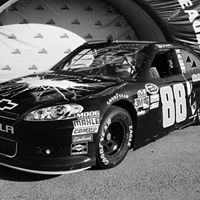Thomas R Lindquist
age ~77
from Ballico, CA
- Also known as:
-
- Tom R Lindquist
- Tom E Lindquist
- Tom T
Thomas Lindquist Phones & Addresses
- Ballico, CA
- 4316 Sperry Rd, Denair, CA 95316
- Turlock, CA
- 4141 N Sperry Rd, Denair, CA 95316
Work
-
Company:Convault inc.
-
Address:4109 Zeering Rd, Denair, CA 95316
-
Phones:2096327571
-
Position:Ceo
-
Industries:Executive Offices
Us Patents
-
Method For Providing And Testing Storage Containment
view source -
US Patent:20130087570, Apr 11, 2013
-
Filed:Oct 6, 2011
-
Appl. No.:13/267556
-
Inventors:Jahanguir Ekhtiar - Turlock CA, US
David P. Harris - Waterford CA, US
Thomas Lindquist - Ballico CA, US -
Assignee:Convault, Inc. - Denair CA
-
International Classification:B65D 90/00
G01M 3/28 -
US Classification:220694, 73 405 R
-
Abstract:In various embodiments, systems and methods are provided for constructing and testing of a barrier providing secondary containment for aboveground storage tanks. Concrete storage containers can be manufactured with primary steel tanks and spill containment formed using an airtight tank wrap. Concrete storage containers can be manufactured with a barrier providing secondary containment to meet or exceed most current codes and standards commonly required for the storage of petroleum, flammable, combustible and other hazardous liquids. Such storage containers can include one or more thermal barriers that provide enhanced resistance when subjected to liquid-pool/furnace fire tests. Additionally, a concrete exterior acts as a thermal mass reducing temperature variations. The concrete exterior further provides a non-corrosive, durable exterior having increased vehicle-impact and projectile-impact resistance. Due to the method of construction in some embodiments, concrete storage containers are provided which give thermal/vehicle impact/projectile resistance while also meeting expectations in weight and buoyancy criteria.
-
Cylindrical Storage Tank
view source -
US Patent:D3878473, Dec 16, 1997
-
Filed:Sep 30, 1996
-
Appl. No.:D/060501
-
Inventors:David C. Wadlington - Gilbert AZ
Mark Schack - Gilbert AZ
G. Clinton Brookhart - Littleton CO
David P. Harris - Fruitland Park FL
Thomas R. Lindquist - Denair CA -
Assignee:Convault, Inc. - Denair CA
-
International Classification:2301
-
US Classification:D23205
-
Apparatus For Entombment Of Tanks In Concrete
view source -
US Patent:49630822, Oct 16, 1990
-
Filed:Mar 9, 1989
-
Appl. No.:7/298548
-
Inventors:Thomas R. Lindquist - Denair CA
Ralph Bambacigno - Modesto CA -
Assignee:Convault, Inc. - Denair CA
-
International Classification:B28B 2300
-
US Classification:425117
-
Abstract:A storage vault includes an inner tank entombed within a concrete outer tank by first erecting a pair of sidewall forms on a base plate to create an open-top enclosure. The wall forms are securely clamped together. A layer of concrete is then poured onto the base plate and the inner tank is restrained by lowered onto the layer of concrete. Concrete is poured into the enclosure to entomb the inner tank while the bottom layer of concrete is still wet. The inner tank is a pair of reinforced hold-down bars extending over the top of the enclosure and having a pair of downwardly extending hold-down tubes which contact the top of the inner tank. Back hold-down bar is forced downwardly by a chain which passes over the hold-down bar and is fastened to the base plate. After the concrete has set sufficiently, the hold-down bars and tubes are removed and the holes created by the hold-down tubes are filled with concrete. After curing, the wall forms and base plate are removed from the vault created within the form assembly.
-
Method For Making Steel/Concrete Tanks
view source -
US Patent:49312359, Jun 5, 1990
-
Filed:Mar 6, 1989
-
Appl. No.:7/319598
-
Inventors:Thomas A. Lindquist - Denair CA
Ralph Bambacigno - Modesto CA -
Assignee:Convault, Inc. - Denair CA
-
International Classification:B28B 116
-
US Classification:264 401
-
Abstract:A method for making a steel/concrete tank is provided. A steel interior tank is pressurized during or after pouring of a concrete outer tank around a steel inner tank. Pressurization is commenced before the concrete has set, and is maintained until substantial setting of the concrete. The resulting structure is less susceptible than previous structures to cracking of the exterior concrete upon pressure-testing of the structure for leaks.
-
Storage Vault And Method For Manufacture
view source -
US Patent:51578883, Oct 27, 1992
-
Filed:Nov 7, 1991
-
Appl. No.:7/793219
-
Inventors:Thomas R. Lindquist - Denair CA
-
Assignee:Convault, Inc. - Denair CA
-
International Classification:E04B 116
B28B 108 -
US Classification:52741
-
Abstract:A dual containment, free-standing, earthquake resistant, above-ground, flammable liquid storage vault is made by first pouring a reinforced concrete outer tank having a flat bottom, for stability, and side walls. The inner surface of the concrete outer tank is covered with an epoxy resin, the epoxy resin acting as an outer liquid barrier to provide secondary containment. A layer of gravel is placed on the epoxy resin covering the bottom of the outer tank. A primary containment steel inner tank is then placed in the outer tank with a space between the walls of the inner and outer tanks. That space is then filled with concrete when a concrete cap is poured covering the inner tank. Leaks from the inner tank are monitored at the gravel layer. The concrete outer tank has integrally formed skids extending from its lower surface for ease of movement and for visual inspection beneath the vault for leaks. The vault can also be made by placing the inner tank within a freestanding, open-top shell; the combination is then encased in reinforced concrete.
-
Apparatus For Forming A Fluid Containment Vault
view source -
US Patent:52341917, Aug 10, 1993
-
Filed:Apr 26, 1991
-
Appl. No.:7/692099
-
Inventors:Ralph Bambacigno - Modesto CA
Thomas R. Lindquist - Denair CA -
Assignee:Convault, Inc. - Denair CA
-
International Classification:B29C 3910
B29C 3922 -
US Classification:249 93
-
Abstract:A vault for dual containment of the fluids by an inner tank and an outer tank is produced by the apparatus described. The tendency of the inner tank to bob up in response to buoyancy from fluid concrete is countered by a hold-down assembly. The hold-down assembly produces downward pressure on the tank which is distributed over a region of the upper surface of the tank by a pressure distribution device which is left embedded in the concrete. An adjustment device is coupled to the form to permit pushing or pulling on the tank manway to move the manway down or up to provide the proper location.
-
Above Ground Liquid Storage System With Overfill Reservoir
view source -
US Patent:49864360, Jan 22, 1991
-
Filed:Oct 20, 1989
-
Appl. No.:7/424277
-
Inventors:Ralph Bambacigno - Modesto CA
Thomas R. Lindquist - Denair CA -
Assignee:Convault Inc. - Denair CA
-
International Classification:B65B 306
-
US Classification:220 86R
-
Abstract:An above-ground liquid storage system (2) includes a steel inner container (4) encased within a layer (6) of reinforced concrete. The steel container has an upper opening (12) in an upper wall (10) thereof. An overfill reservoir (14) is positioned within the container below the upper opening so that the contents of the overfill reservoir are protected by virtue of being within, rather than outside of, the container. A fill pipe (18) extends through the overfill reservoir to permit user to introduce a liquid, such as gasoline or fuel, into the container. The fill pipe has an upper end (26) positioned above the upper opening and a lower end (22) positioned below the upper opening. An upper barrier (40), including a cylindrical wall (30) covered by a removable cover (34) to define an operating region (43) above the upper opening, is used to seal the upper opening. The overfill reservoir has a normally sealed drain (44); overfill liquid within the overfill reservoir is drained into the interior (16) of the container by the user opening a normally closed drain valve (46).
-
Drop Tube Assembly With Shut-Off Valve And Method For Assembling The Same
view source -
US Patent:52359999, Aug 17, 1993
-
Filed:May 22, 1992
-
Appl. No.:7/887975
-
Inventors:Thomas R. Lindquist - Denair CA
Don K. Shackelford - Denair CA -
Assignee:Guillotine, Inc. - Stockton CA
-
International Classification:F16K 3124
F16K 3300 -
US Classification:137 15
-
Abstract:A tank filling drop tube assembly (2, 48) includes a drop tube (16, 50) and a linear motion shut-off valve assembly (24). One embodiment includes a barrier (30) which seals the interior of the drop tube. Outlet ports (32) are formed through the drop tube above the barrier. A restrictor sleeve (26, 58) is mounted around the outside of the drop tube just below the outlet ports. The restrictor sleeve is connected to a float (36) at the upper end (10) of the drop tube. When the tank (4) is substantially filled, the float lifts the restrictor sleeve to seal the outlet ports to help prevent overfilling of the tank.
Name / Title
Company / Classification
Phones & Addresses
CEO
Convault Inc.
Executive Offices
Executive Offices
4109 Zeering Rd, Denair, CA 95316
President
Convault Intl., Ltd
4109 E Zeering Rd, Denair, CA 95316
President
CONVAULT, INC
Mfg Concrete Fuel Tanks · Metal Tank, Heavy Gauge, Mfg · Service Station Equipment-Manu · Other Concrete Product Manufacturing
Mfg Concrete Fuel Tanks · Metal Tank, Heavy Gauge, Mfg · Service Station Equipment-Manu · Other Concrete Product Manufacturing
PO Box 629, Denair, CA 95316
4109 E Zeering Rd, Denair, CA 95316
2096327571, 2096324711
4109 E Zeering Rd, Denair, CA 95316
2096327571, 2096324711
President
Chemvault, Inc
4109 E Zeering Rd, Denair, CA 95316
Executive VP, Chief Operating Offi, Executive Vice Presi
Cypress Creek Ranch, LLC
Director, Secretary
Convault Wildwood, Inc
4109 E Zeering Rd, Denair, CA 95316
Isbn (Books And Publications)




Ophthalmic Surgery: Looseleaf and Update Service
view sourceAuthor
Thomas D. Lindquist
ISBN #
0815154585
Resumes

Thomas Lindquist
view sourceLocation:
United States
Googleplus

Thomas Lindquist

Thomas Lindquist

Thomas Lindquist
Myspace
Plaxo

Thomas Lindquist
view sourceEricsson AB
Youtube
Classmates

Thomas Lindquist
view sourceSchools:
St. Croix Lutheran High School West St. Paul MN 1968-1972
Community:
Raeann Stuneck, Nancy Mundt, Fay Herman, Cheryl Sachs, Linda Krause, Jackie Ubel, Timothy Gerke, Sandra Webster, Gwen Heldt, Kevin Hanke, Kate Johnson

Thomas lindquist | Wakefi...
view source
Duluth Cathedral High Sch...
view sourceGraduates:
Tom Lindquist (1949-1953),
Marcy Cameron (1968-1972),
Louise Berg (1992-1996),
Michael Same (1948-1952)
Marcy Cameron (1968-1972),
Louise Berg (1992-1996),
Michael Same (1948-1952)

Coldwater High School, Co...
view sourceGraduates:
Thomas Lindquist (1973-1977),
Tricia Shady (1985-1989),
Tony Sikorski (1972-1976),
Connie Rodgers (1977-1981)
Tricia Shady (1985-1989),
Tony Sikorski (1972-1976),
Connie Rodgers (1977-1981)

St. Croix Lutheran High S...
view sourceGraduates:
Thomas Lindquist (1968-1972),
Laura Stoerzinger (1976-1980),
Chrisine Smith (2000-2004),
Stephanie Henry (1995-1999)
Laura Stoerzinger (1976-1980),
Chrisine Smith (2000-2004),
Stephanie Henry (1995-1999)

Prairie Community High Sc...
view sourceGraduates:
Tom Lindquist (1968-1971),
Judy Farnham (1971-1974),
Jim Witte Jim Witte (1958-1971),
David Johnson (1964-1978)
Judy Farnham (1971-1974),
Jim Witte Jim Witte (1958-1971),
David Johnson (1964-1978)

Thomas Lindquist
view source
Thomas Lindquist
view source
Thomas Lindquist
view source
Thomas Lindquist
view source
Thomas Lindquist
view source
Thomas Lindquist
view source
Linda Thomas Lindquist
view source
Thomas Lindquist
view sourceGet Report for Thomas R Lindquist from Ballico, CA, age ~77





